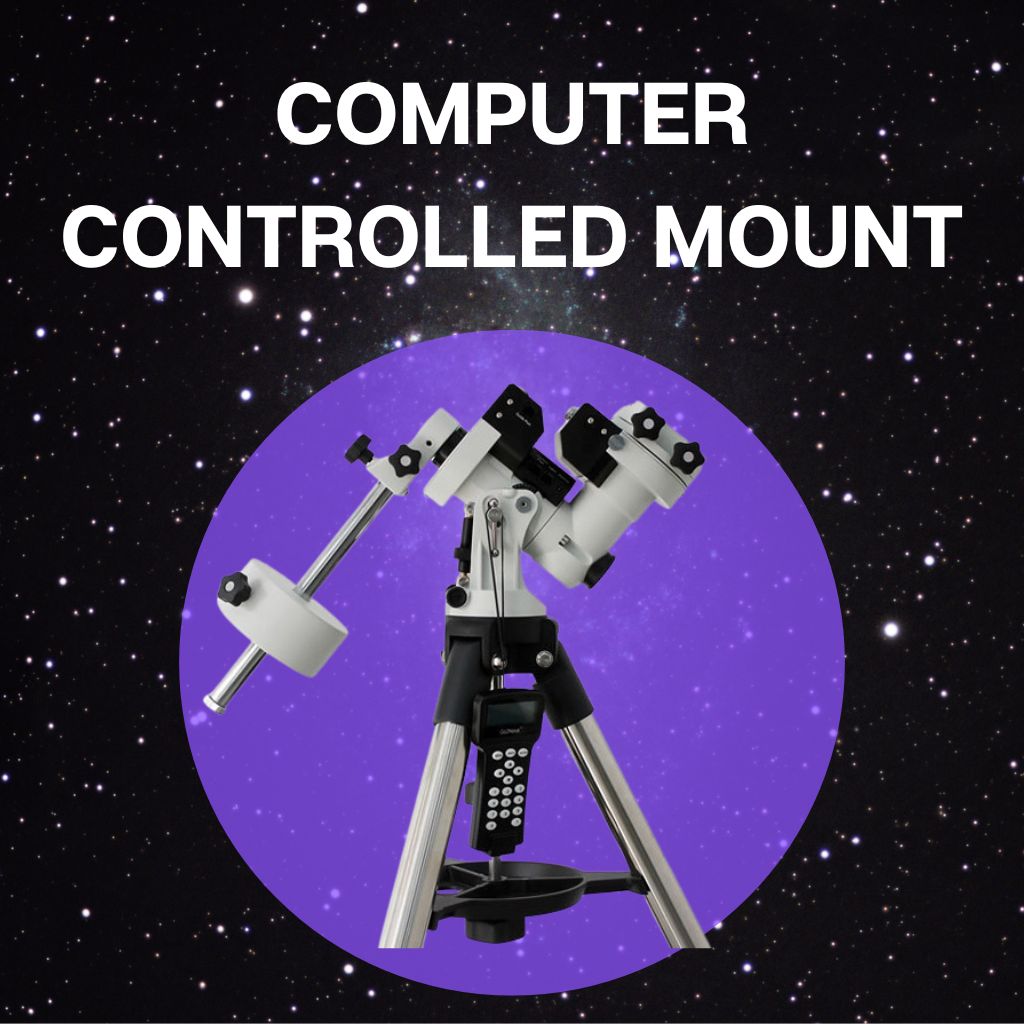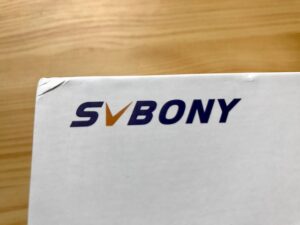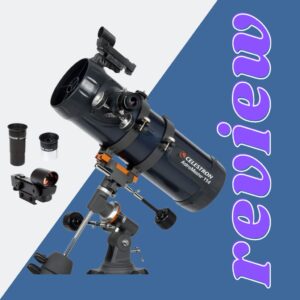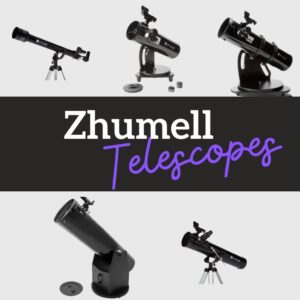This site contains affiliate links to products. I may receive a commission for purchases made through these links.
There are many benefits of computer-controlled mounts over manually controlled mounts. Generally, the computer-controlled mounts are more precise. Moreover, they help in producing stable, crisp images. They also make aligning the telescope easy. This means that finding your celestial object of interest is very simple.
In fact, with modern computer-controlled telescope mounts, you only need to tell it about the object you want to find and give it a few parameters. After that, it will perform most of the computations itself. That means you have an automated astronomy research tool.
Let’s dive deeper into the benefits of having a computer control your telescope mount.
1. Precise tracking of celestial objects
When the Earth moves, the different objects in the night sky also move with it. If you are using a manual telescope, you have to move the telescope manually with the object.
You must continuously recalibrate the telescope and align it with your object of interest.
You can lose track of the object if you don’t do that. And if that happens, you will have to do all the calculations again.
However, with an automated mount, you can do this very easily. All you need to do is put in a few parameters, and the computer will automatically focus the telescope for you.
It will then calculate the speed of the object’s movement. It will automatically move the telescope along with the object using that speed. This means that all your images will be consistent, and the object will be tracked across the sky effortlessly.
2. Ability to track objects in real-time and compensate for Earth’s rotation
As the Earth spins around its axis, the stationary objects in the night sky begin to move across the sky. This means that if you have a telescope tube that’s not moving with them, you will lose track of them.
When you are using your telescope for astrophotography, it will usually involve a lot of long observing sessions. That’s especially true if you want to see many terrestrial details using a high-power telescope.
However, if you use a non-computerized telescope, it will not stay focused on the object. And you can correct the telescope for the object’s movement manually. But you will need to do this repeatedly.
And even if you don’t find it challenging to keep doing it, the image will be shaky and inconsistent. That’s because you won’t be able to focus the telescope the same way every time.
Hence, it will lead to a significant difference in your picture quality between different object phases.
However, a computerized mount will focus your telescope at the same point every time. And it will keep your telescope focused on it. This means better, more stable photos that reveal greater detail.
3. Increased ease of use and accessibility for beginners
As a beginner in astronomy, you must learn many complicated things before you can masterfully operate a telescope. A computerized telescope mount makes the whole process much easier.
For instance, if you want to align your telescope manually, you must first find the south celestial pole. After that, you need to calculate your latitude. And then, you have to tilt your telescope at an angle that the degrees of inclination correspond to your latitude.
That sounds fairly complicated. And it is, especially for a beginner.
However, with a computerized mount, you only need to align your telescope mount to the Celestial South. Then, you enter your latitude and longitude, and the computer takes care of the rest.
It computes how to tilt the telescope and where to point it. And then, it feeds all that information into electrical motors that do everything for you. This makes your observing sessions a breeze!
You may also like: Are computerized telescopes good for beginners?
4. Reduction of user error in telescope alignment and tracking
If you are aligning your telescope manually, you may make an error. It could be a small error in the calculation, but it will throw off your entire observing session.
When we align the telescope manually, we need to know many things. These include reading up on star alignment. We can find this information in different star charts.
After that, we must calculate the coordinates for our object of interest and point our telescope at it. We might even have to use a finder scope to locate and view the object through the main lens.
All of this adds several layers of complexity to the process. Each layer has its probability of error. This means that you’re compounding your chances of messing up your observation when you do everything manually.
On the other hand, a computer-controlled mount reduces this risk. When you give it some parameters, it will calculate everything independently. And it will also calibrate the telescope’s position on its own.
This means that the telescope will always point to the right object. Hence, you can be much more confident in the data you collect.
5. Integration with astronomy software and databases
Building on the previous point, a computerized control mount can help you integrate your telescope with online databases. This means you can get real-time locations of the different celestial phenomena without calculating them.
Suppose you don’t have a computer-controlled telescope. In that case, you will need to manually figure out the location of different celestial objects.
And you would have to do that by figuring out the star alignment. You get this alignment in different charts, which predict the movement of the celestial bodies.
For instance, someone discovered an exciting comet and shared the details on a forum. You want to see the comet too. But you have a manually adjustable telescope mount.
So, you pick up your star charts and whatnot to calculate the coordinates. And once you are done, you use the coordinates to calibrate your optical tube.
After that, you point your optical tube at the comet. You locate it using the finder scope and then view it. But it had already grown faint all the time it took you to figure out where the comet was. You can save time doing all that with a modern telescope mount.
The person who posted the comet online gave you the coordinates. You need to input these coordinates in your telescope.
These telescopes can be controlled with a computer connected to the internet. It takes the real-time location of different objects in the sky from the internet.
And then it uses that information to calculate the precise location where your telescope should be pointing. And it points the telescope for you. This means you can see whatever you want with just a few clicks. That’s far more convenient and up-to-date.
You may also like: How To Connect Telescope To Computer
6. Remote control operation of telescopes
Telescopes that have a computer-operated mount can be controlled remotely. This means you don’t always need to be present on-site to operate the telescope to collect data.
When you use a manual telescope, you need to present with the telescope to adjust it. The calibration requires complex mathematical calculations. And once you have calculated everything, you need to manually point your optical tube by turning the knobs.
However, let’s imagine a quick scenario. Let’s say you are studying the different phases of different planets in our galaxy during an eclipse. But, on the eclipse day, your department sets up a mandatory meeting in another city altogether.
What do you do now? Do you miss out on this opportunity and wait for the next eclipse?
Or do you get a new computer-operated mount that you can use remotely to collect your data? That’s right. Computerized mounts can be controlled remotely using the internet.
You can point your telescope toward your object of interest from anywhere in the world. And that will allow you to take pictures and collect data whenever you want.
Therefore, computerized mounts enable greater flexibility in collecting data and taking pictures.
7. Compatibility with various telescope designs and types
It can be challenging to fit different telescopes with your telescope mount. Many equatorial mounts are designed for one specific telescope and can’t be used with other types.
However, German equatorial mounts are compatible with different types of telescopes.
This means you can use it with multiple telescopes. Hence, you don’t need to spend money on different mounts to host different types of telescopes.
8. Automated finding and tracking of objects in the sky
The biggest advantage of a computerized mount is its ability to find objects automatically. With this feature, you can manually calculate the object’s position. After that, you would have to focus the telescope on it and then zoom in to view it.
Manual telescopes are often harder to operate because they require you to do everything manually. This starts with looking up the star alignment in different star charts.
Once you have done that, you use your coordinates to calculate the telescope’s alignment on the declination axis. You also need to calculate its position relative to the polar axis. Both of these are different from the Earth’s rotational axis.
After calculating the angles for the polar alignment, you need to start scanning the sky using your finder scope. This will help you locate the object you are looking for.
Once you have done that, you must start turning the knobs carefully to zoom in on the object. This can take a while because it might take a lot of work to fine-tune the exact position where the image becomes the clearest.
Once all that is done, you can start taking images and recording your observations. But there’s another step. You need to keep tracking the object.
Because the Earth keeps moving, stationary objects also move across the sky. This means you need to keep on recalibrating and refocusing the telescope. This can waste significant time and takes up a lot of your energy.
However, you must give the computer a few parameters with an automated mount. After that, it will calibrate the telescope and focus it on the object of interest.
Therefore, all that is left to do for the observation is to observe and take readings. Sounds simple enough.
9. Improved accuracy and consistency in astrophotography
A computerized telescope mount mathematically computes where to focus the telescope. This means it will always focus on the same point. This level of accuracy can’t be achieved manually.
When using a telescope for astrophotography, you want all your pictures to look as consistent as possible.
However, if you manually focus the telescope each time, your pointing accuracy will be at least marginally affected.
This means your pictures would appear less stable. On the other hand, a computerized telescope will always focus at the same point across different phases.
This makes your pictures appear far more stable. And it’s very important for long-exposure photography. That’s because even a little instability can ruin hours of work.
If you photograph a celestial phenomenon that happens once in a long time, you need to ensure that you don’t ruin the shot. That’s why you never use amateur telescopes to take a photo of them.
10. Possibility of upgrading and customizing the system with additional hardware and software
Having a computer-controlled telescope means that you can keep upgrading it easily. You can download software updates. And you can even improve your hardware with better parts that can be easily bought from different stores.
Having a completely manual mount means that everything is very mechanical. You must know the mechanics if you want to modify or upgrade your mount.
This can be far more complicated than replacing an electrical motor in automated mounts. Therefore, people planning to upgrade their telescope systems will likely go with an automated mount.
Types of computer-controlled mounts
Telescope mounts are very important for astrophotography. They ensure that the telescope remains stable. A stable telescope can help you photograph deep-sky objects clearly without making the picture shaky or blurry.
Most people would agree that telescopes are only as good as their telescope mount. That’s because telescopes don’t only magnify the sky; they also magnify the vibrations in the view. This makes your image shaky, and you can’t see the details clearly.
Thus, people use telescope mounts for two main reasons:
- Hold the telescope firmly so that the vibrations and the shakiness are minimized.
- Establish a system that moves the telescope smoothly and precisely.
Below are some of the types of telescope mounts:
Alt-Azimuth mount
Alt-azimuth mounts are the simplest form of telescope mount. They are good for beginners who want to observe and scan the sky at low power.
The alt-azimuth mount is sometimes called the alt-az mount. That’s because it allows you to move the telescope along the altitude axis (vertical) and the horizontal axis (azimuth axis).
Therefore, its name became the alt-az mount.
This mount often comes with several knobs. These allow you to fine-tune the telescope’s movement via slow motion. This helps in tracking a celestial object smoothly across the sky.
This Twilight Adjustable Angle Alt-Azimuth Telescope Mount is one of the best Alt-Azimuth you can get.
However, the alt-az mount is usually not computer-controlled. This means that it’s not optimal for high-power observing sessions or deep-sky photography.
That’s because they tend to lose celestial objects as they move. This will make your images shaky when you refocus the telescope mount.
Recently, some Alt azimuth telescope mounts have been equipped with computer control. This allows us to program them to track objects in the night sky. While this makes them good for looking at objects, they must still be more well-equipped for astrophotography.
And they are even less suitable for long-exposure photography.
Equatorial mounts
Equatorial mounts are essential for deep sky astrophotography over a long period. They are superior to alt-azimuth mounts that are non-computerized. These telescope mounts can track the objects in the night sky as they move.
When the Earth rotates around the polar axis, stationary objects in the night sky appear to move. But your telescope won’t move with the object if you use alt-azimuth mounts. And you will lose sight of it over time.
Hence, for a long observing session, you need tracking mounts. That’s where a computerized telescope mount comes in.
These computerized telescope mounts move your telescope across the night sky at the pace of the object. They use electric motors that are programmed using software to move along with the object.
Thus, they keep the object focused and allow you to get crisp photos for your deep sky astrophotography session.
You may also like: Alt-Azimuth Mount vs Equatorial Mount – What To Choose?
Dobsonian mounts
A Dobsonian telescope mount is placed on a heavy platform and put on the ground. It is designed to hold astronomical telescopes. These are massive Newtonian reflectors, and this mount can help them hold a steady image.
The Dobsonian telescope’s mounts use a newer version of the alt azimuth mounts. John Dobson invented the Dobsonian telescope in 1956.
Usually, these telescopes have a very large aperture. It can range from anywhere between 6 to 20 inches.
German equatorial mounts
Newtonian Reflectors and Newtonian Refractor telescopes use German equatorial mounts. Its most distinct feature is the large counterweight.
The German equatorial mount has a large counterweight extending on the telescope’s opposite side. This counterweight provides balance to the telescope. The balance helps keep the telescope steady and provides a more stable image quality.
This helps with long-exposure photography.
If you are looking for a good German equatorial mount, we recommend the Celestron CG-4 German Equatorial Mount.
Fork mount
Shorter telescopes usually use the fork mount. This is a more convenient-to-use variant of the German EQ mount. Fork mounts are great for astrophotography because they can be controlled using a computer.
Most catadioptric telescopes use the fork mount. The computer controls internal motors. It calculates the alt-azimuth settings and feeds them back into the equatorial drive.
This helps to align the fork mounts automatically with a few computational commands.
Such technology makes this mount popular in current research for finding celestial objects.
The operation is fully automatic, which helps in long observing sessions. Plus, it makes the whole experience fun and easy. This mount saves you much time and effort when finding fainter objects. It also helps with accurate tracking.
All you need to do is align your telescope. After that, you give it your latitude and longitude. And that’s it! The mount will compute everything else itself, which makes for a breezy study of the stars.
Takeaway: You can never go wrong with computer-controlled mounts
Computer-controlled mounts have many advantages over their manually controlled counterparts. You can locate objects very easily with just a few parameters. They can track objects across the night sky precisely and automatically. They can be operated from anywhere in the world. And they are far easier to upgrade than manually controlled mounts.
Additionally, your pictures will be far more stable and reveal greater detail when you use an automatic mount. That’s because they keep the image stable by tracking the object.
This makes them great for beginners as they are much easier to use. They also make a great gift for someone interested in astronomy.
You may also like:







